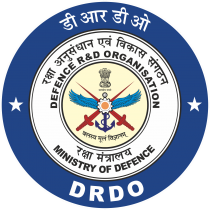Global Bioinsecticides Market Expected to Grow with a CAGR of 14.2% During the Forecast Period, 2018-2027 - ResearchAndMarkets.com
The "Bioinsecticides - Global Market Outlook (2018-2027)" report has been added to ResearchAndMarkets.com's offering.
The Global Bioinsecticides Market accounted for $1,457.80 million in 2018 and is expected to reach $4,835.08 million by 2027 growing at a CAGR of 14.2% during the forecast period.
Some of the key factors influencing the market growth include the rise in crop loss due to insects and diseases, rise in mutation in natural flora and infertility of soil due to chemical insecticides, changing farming practices and growing pest management industries. However, stringent regulatory policies on pesticides are restricting market growth.
Bioinsecticides are organic formulations applied to crops to kill insects that feed on them. They contain live bacteria that produce toxins which poison and kill the insects. These bio-insecticides are composed of animals, plants, bacteria, or minerals found in nature. Bioinsecticides are sprayed on the crop as a pest repellent to control insects by attracting them to trap or disrupting their mating patterns.
Based on the application, the fruits and vegetable segment is going to have a lucrative growth during the forecast period. Many fruits and vegetables have tested positive for the presence of pesticides. This has decreased the demand for chemical pesticide-treated fruits and vegetables. Bioinsecticides have a relatively lower residue level and are a perfect fit for the treatment of fruits and vegetables and hence fruit and vegetable forms the largest application area for bioinsecticides.
By Geography, Asia Pacific bioinsecticides market expected to grow at a significant rate over the forecast period due to increase in the dependence on farming in India and China, increase in awareness about the bioinsecticide products benefits, and low cost of the products are bolstered the market in the region.
What the report offers:
- Market share assessments for the regional and country-level segments
- Strategic recommendations for the new entrants
- Covers Market data for the years 2017, 2018, 2019, 2023 and 2027
- Market Trends (Drivers, Constraints, Opportunities, Threats, Challenges, Investment Opportunities, and recommendations)
- Strategic analysis: Drivers and Constraints, Product/Technology Analysis, Porter's five forces analysis, SWOT analysis, etc.
- Strategic recommendations in key business segments based on the market estimations
- Competitive landscaping mapping the key common trends
- Company profiling with detailed strategies, financials, and recent developments
- Supply chain trends mapping the latest technological advancements
Key Topics Covered:
1 Executive Summary
2 Preface
2.1 Abstract
2.2 Stake Holders
2.3 Research Scope
2.4 Research Methodology
2.4.1 Data Mining
2.4.2 Data Analysis
2.4.3 Data Validation
2.4.4 Research Approach
2.5 Research Sources
2.5.1 Primary Research Sources
2.5.2 Secondary Research Sources
2.5.3 Assumptions
3 Market Trend Analysis
3.1 Introduction
3.2 Drivers
3.3 Restraints
3.4 Opportunities
3.5 Threats
3.6 Application Analysis
3.7 Emerging Markets
3.8 Futuristic Market Scenario
4 Porters Five Force Analysis
4.1 Bargaining power of suppliers
4.2 Bargaining power of buyers
4.3 Threat of substitutes
4.4 Threat of new entrants
4.5 Competitive rivalry
5 Global Bioinsecticides Market, By Type
5.1 Introduction
5.2 Bacillus Thuringiensis
5.3 Verticillium Lecanii
5.4 Beauveria Bassiana
5.5 Metarhizium Anisopliae
5.6 Other Types
5.6.1 Azadirachtin
5.6.2 Aspergillus Flavus
5.6.3 Paecilomyces Fumosoroseus
6 Global Bioinsecticides Market, By Mode Of Action
6.1 Introduction
6.2 Natural Insecticides
6.3 Parasites
6.4 Pathogens
6.5 Predators
6.6 Bio-Rationals
7 Global Bioinsecticides Market, By Source
7.1 Introduction
7.2 Plant Extract
7.3 Insect Viruses
8 Global Bioinsecticides Market, By Formulation
8.1 Introduction
8.2 Liquid Formulation
8.3 Dry Formulation
9 Global Bioinsecticides Market, By Mechanism
9.1 Introduction
9.2 Anti-Feeding
9.3 Desiccation
9.4 Mating Disruption
9.5 Suffocation
10 Global Bioinsecticides Market, By Mode of Application
10.1 Introduction
10.2 Soil Treatment
10.3 Foliar Spray
10.4 Post-Harvest
10.5 Seed Treatment
11 Global Bioinsecticides Market, By Insect
11.1 Introduction
11.2 Insects and Mites
11.3 Soil Insects
11.4 Caterpillars
12 Global Bioinsecticides Market, By Sales Channel
12.1 Introduction
12.2 Distributor
12.3 Direct Sales
13 Global Bioinsecticides Market, By Application
13.1 Introduction
13.2 Fruits & Vegetables
13.3 Pulses & Oilseeds
13.4 Grains & Cereals
13.5 Commercial Crops
13.6 Turfs & Ornamentals
13.7 Other Applications
14 Global Bioinsecticides Market, By Geography
14.1 Introduction
14.2 North America
14.3 Europe
14.4 Asia Pacific
14.5 South America
14.6 Middle East & Africa
15 Key Developments
15.1 Agreements, Partnerships, Collaborations and Joint Ventures
15.2 Acquisitions & Mergers
15.3 New Product Launch
15.4 Expansions
15.5 Other Key Strategies
16 Company Profiling
16.1 Syngenta AG
16.2 Bayer Cropscience AG
16.3 Isagro SPA
16.4 BASF SE
16.5 Valent Biosciences Corporation
16.6 Agrilife
16.7 Monsanto
16.8 Marrone Bio Innovations
16.9 ADAMA India Private Limited
16.10 Certis LLC
16.11 Bioworks, Inc.
16.12 Biotech International Ltd
16.13 DowDupont
16.14 FMC Corporation
16.15 Koppert Biological Systems
16.16 Sumitomo Chemical
16.17 Novozymes AS
16.18 Shandong Weifang Rainbow Chemical Co., Ltd.
16.19 Nufarm
16.20 Nissan Chemical Corporation
For more information about this report visit https://www.researchandmarkets.com/r/qwuonu
View source version on businesswire.com: https://www.businesswire.com/news/home/20200116005519/en/





